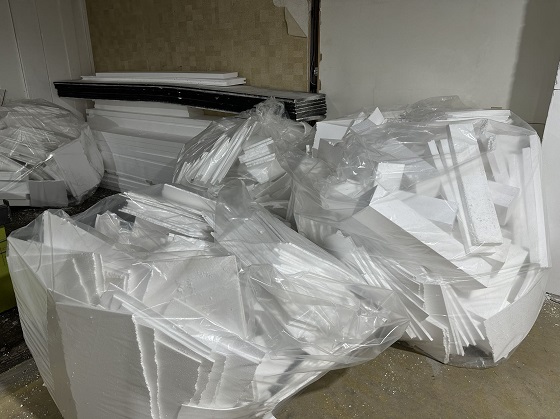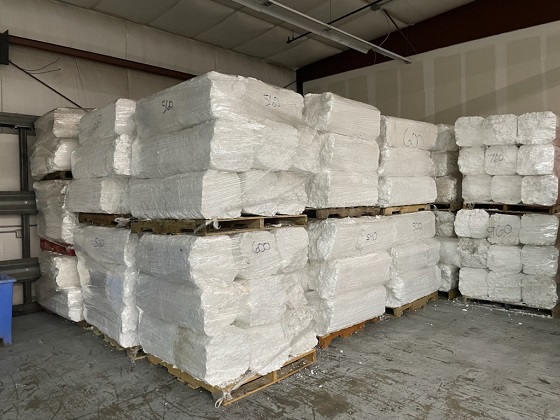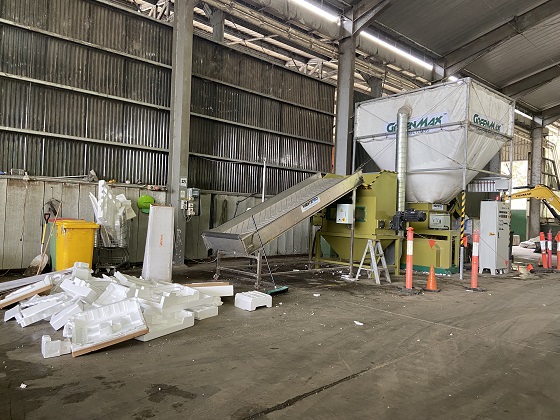Polystyrene Wastes Recycling Method & Process | GREENMAX
Polystyrene (also known as EPS or Styrofoam) is a very popular plastic material which discovers large application in packaging of food products, electronic, home appliances, furniture etc. due to its excellent insulating as well as protective properties. Polystyrene is used to make useful products such as single use cups, trays, and so on.

In spite of the attractiveness of polystyrene, municipalities, organizations, and companies are facing problems in recycling polystyrene. Being huge and cumbersome, polystyrene take up significant space in rubbish containers which causes that containers be full quicker and therefore needs to be emptied more often. Polystyrene is lightweight contrasted to its volume so it occupies valuable landfill space and can be blown around as well as cause a nuisance in the surrounding areas.
Although some companies have a recycling policy, most of the polystyrene still went into landfill. Based on conservative estimates, numerous tons of waste polystyrene is generated in Australia and sent to landfills every year.
Environmental Impacts
While it is estimated that EPS foam (or polystyrene) items represent less than 1% of the total weight of landfill materials, the portion of landfill space it takes up is higher considering that it is very lightweight. Moreover, it is non-biodegradable, taking thousands of years to decompose. Even when currently disposed of in landfills, polystyrene can easily be carried by the wind as well as litter the streets or end up polluting water. When polystyrene breaks apart, the small polystyrene can be eaten by animals which can trigger choking or intestinal blockage.
Polystyrene can be taken in by fishes once it breaks down in the sea. Marine animals higher the food chain might eat the fishes that have taken in polystyrene, therefore concentrating the contaminant. Maybe a potential health hazard for us people who are on top of the food chain taking into consideration that styrene, the plastic monomer used in producing polystyrene has actually been categorized by the United States National Institutes of Health (NIH) as well as the International Agency for Research Study on Cancer (IARC) as a possible human carcinogen. Styrene is derived from either oil or natural gas, both of which are nonrenewable as well as are quickly being depleted, developing environmental sustainability problems for polystyrene.

Recycling Trends
There seems to be a common misunderstanding that polystyrene is non-recyclable. Being a thermoplastic, it can actually be melted and molded into various plastic products. Presently, the recycling of polystyrene (or EPS foam) primarily follows the following procedure:
Segregation-- polystyrene items are separated from other wastes and afterwards sorted.
Compaction-- The set apart polystyrene products are fed to a compactor in order to reduce its volume. GREENMAX EPS compactor have a compaction ratio of 50:1, which means that it can decrease the volume by up to 98%.
Shredding-- Larger items are shredded into flakes. Product packaging "peanuts"-- little polystyrene items used to protect delicate items-- usually skip this step are fed directly to the pelletizing equipment.
Melting/Extrusion-- The flakes are forced with pelletizing extruders where they are heated and melted, then allowed to cool in order to solidify. The resulting material can be made use of, through reheating and melting, to produce clothing hangers, photo frames, DVD cases as well as numerous other plastic products.

GREENMAX Polystyrene Wastes Recycling Solution
GREENMAX can provide you with a full range of waste polystyrene recycling solutions, including polystyrene recycling machines, purchase and sale information of waste polystyrene in Australia, polystyrene reuse systems, polystyrene granulation equipment, etc. If you need to recycle waste polystyrene but don't know what solution to use, please contact us and we will provide you with the most suitable solution within 24 hours.
